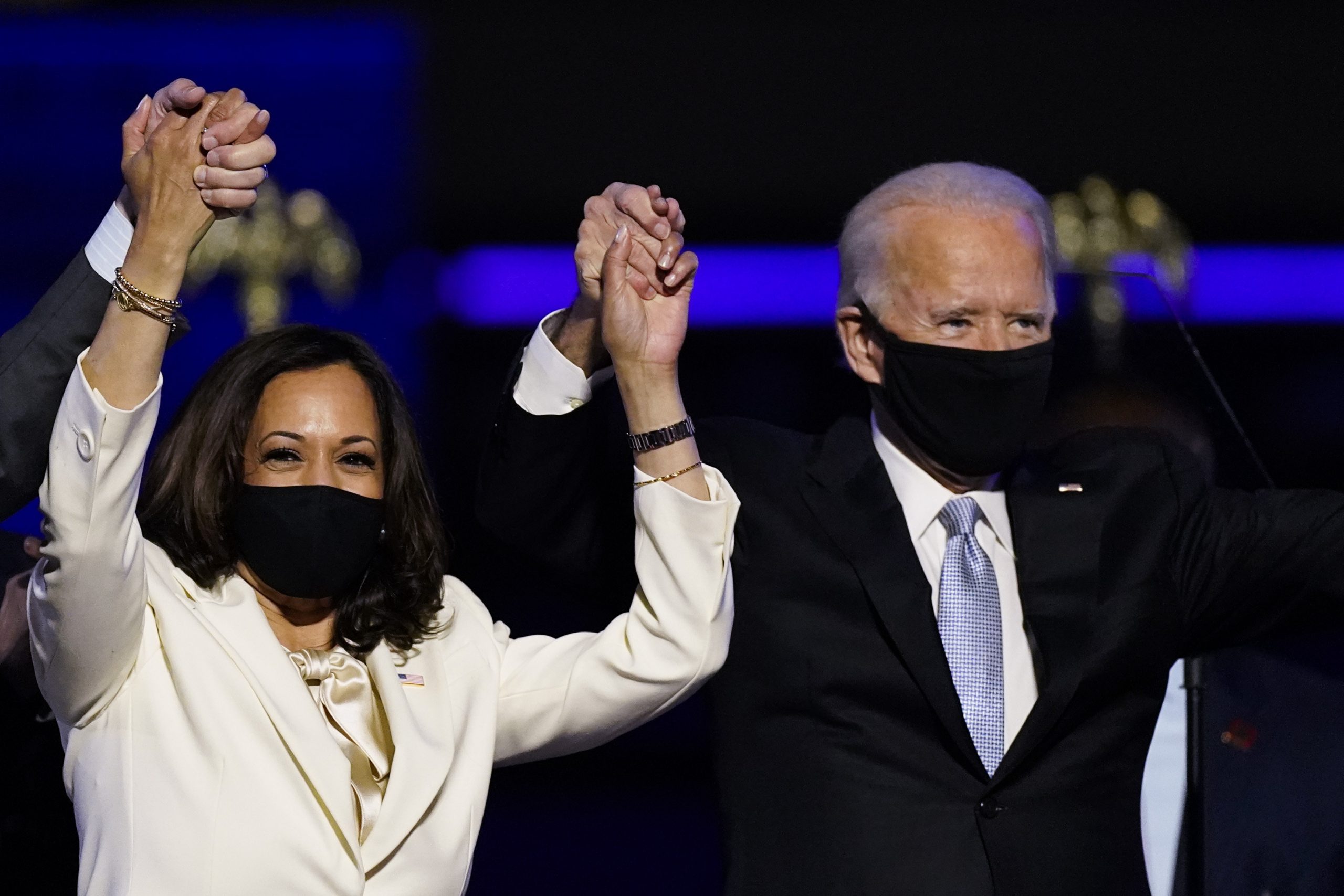President-elect Joe Biden will have an all-female senior communications team at his White House, led by campaign communications director Kate Bedingfield.
Bedingfield will serve as Biden’s White House communications director. Jen Psaki, a longtime Democratic spokeswoman, will be his press secretary.
Biden also plans to name Neera Tanden, the president and CEO of the Center for American Progress, a liberal think-tank , as director of the Office of Management and Budget, according to a person familiar with the transition process granted anonymity to speak freely about internal deliberations.
All three are veterans of the Obama administration. Bedingfield served as communications director for Biden while he was vice-president; Psaki was a White House communications director and a spokesperson at the State Department; and Tanden served as a senior adviser to Health and Human Services Secretary Kathleen Sebelius and helped craft the Affordable Care Act.
“Communicating directly and truthfully to the American people is one of the most important duties of a President, and this team will be entrusted with the tremendous responsibility of connecting the American people to the White House,” Biden said in a statement.
“These qualified, experienced communicators bring diverse perspectives to their work and a shared commitment to building this country back better,” he added.
Karine Jean Pierre, who was Vice-President-elect Kamala Harris’ chief of staff, will serve as a principal deputy press secretary for the president-elect. She’s another Obama administration alum, having served as a regional political director for the White House office of political affairs.
Pili Tobar, who was communications director for coalitions on Biden’s campaign, will be his deputy White House communications director. She most recently was deputy director for America’s Voice, an immigration reform advocacy group, and was a press staffer for Senate Minority Leader Chuck Schumer, D-N.Y.
The transition also announced the appointment of three Biden campaign senior advisers to top communications roles. Ashley Etienne, a former communications director for House Speaker Nancy Pelosi, will serve as Harris’ communications director. Symone Sanders, another senior adviser on the Biden campaign, will be Harris’ senior adviser and chief spokesperson.
Elizabeth Alexander, who served as the former vice-president’s press secretary and his communications director while he was a U.S. senator from Delaware, will serve as Jill Biden’s communications director.
The hires reflect Biden’s stated desire to build out a diverse White House team — four of the seven top communications roles will be filled by women of colour, and it’s the first time the entire senior White House communications team has been entirely female.
But they also reflect what’s expected to be a return to a more traditional White House press operation, after President Donald Trump upended the ways in which his administration communicated with the press.
In contrast with the precedent set by administrations past, Trump’s communications team held few press briefings, and those that did occur were often combative affairs riddled with inaccuracies and falsehoods. Trump himself sometimes served as his own press secretary, taking questions from the media, and he often bypassed the White House press corps entirely by dialing into his favourite Fox News shows.
After his campaign went virtual due to the coronavirus pandemic, Biden faced some of his own criticism for not being accessible to reporters. But near the end of the campaign, he answered questions from the press more frequently, and his transition team has held weekly briefings since he was elected president.
The choice of a number of Obama administration veterans — many with deep relationships with the Washington press corps — suggests a return to a more congenial relationship with the press.
Meanwhile at OMB, Tanden would be responsible for preparing Biden’s budget submission and would command several hundred budget analysts, economists and policy advisers with deep knowledge of the inner workings of the government.
Her choice may mollify progressives, who have been putting pressure on Biden to show his commitment to progressive priorities with his early staff appointments. She was chosen over more moderate voices with roots in the party’s anti-deficit wing such as Bruce Reed, who was staff director of President Barack Obama’s 2010 deficit commission, which proposed a set of politically painful recommendations that were never acted upon.
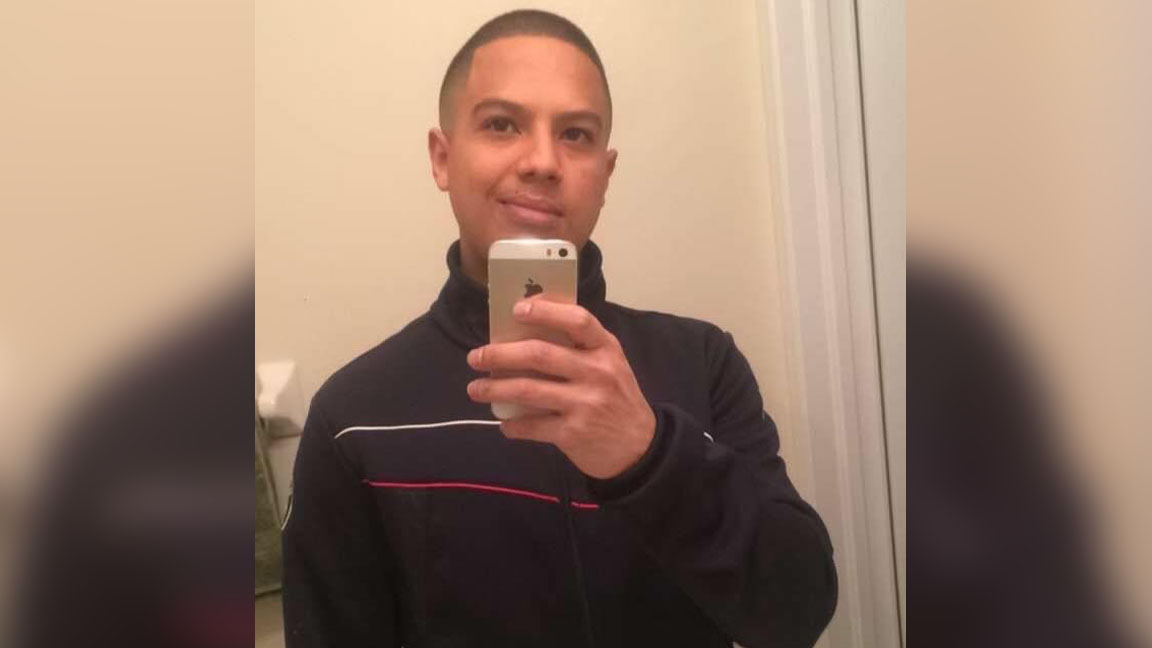
A man is dead following a collision in Mississauga between a motorcycle and a transit bus.
Peel police say the crash occurred in the area of Mavis Road and Novo Star Drive just after 1:30 p.m.
Police say it appears a Mississauga Transit bus was turning left on to Crawford Mill Avenue when the motorcyclist hit the bus.
Paramedics say they transported the man in critical condition to a local hospital, where he was pronounced dead.
A family member confirmed to CityNews the victim is 28-year-old Gilberto Garcia from Mississauga.
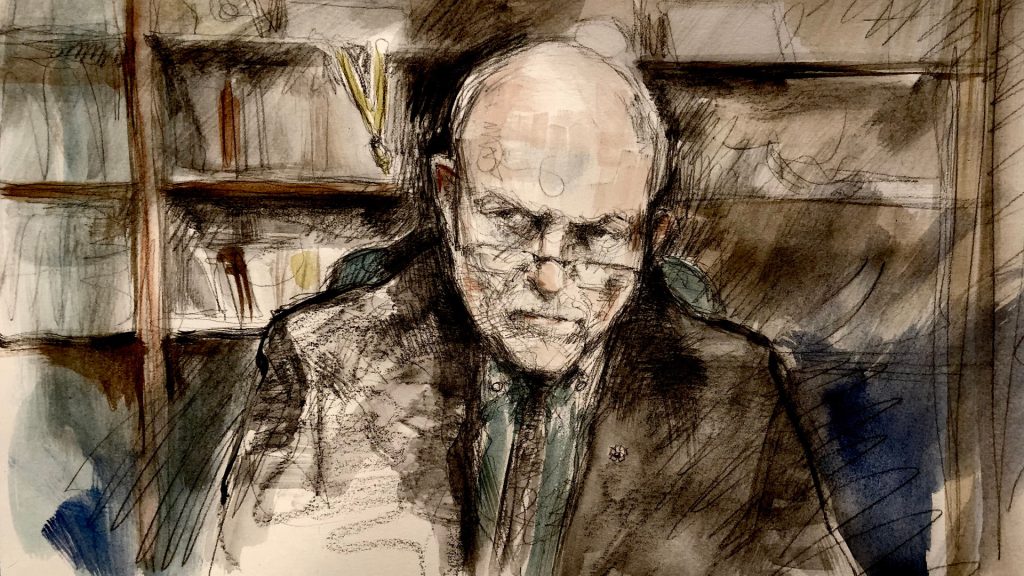
The defence’s star witness is set to testify today at the trial of the man who killed 10 people in Toronto’s van attack.
Dr. Alexander Westphal is expected to say Alek Minassian is not criminally responsible for his actions on April 23, 2018, due to autism spectrum disorder.
Minassian has pleaded not guilty to 10 counts of first-degree murder and 16 of attempted murder.
He has admitted to planning and carrying out the attacks with his state of mind at the time being the sole issue at trial.
CityNews reporter Adrian Ghobrial is covering the trial, follow his tweets below:
Last week, Westphal refused to testify if court didn’t give in to his demands to seal his videotaped interviews with Minassian and play the clips to court in secret.
The judge begrudgingly gave in to sealing the videos after the psychiatrist warned they could incite more violence, but will allow journalists to watch the videos.
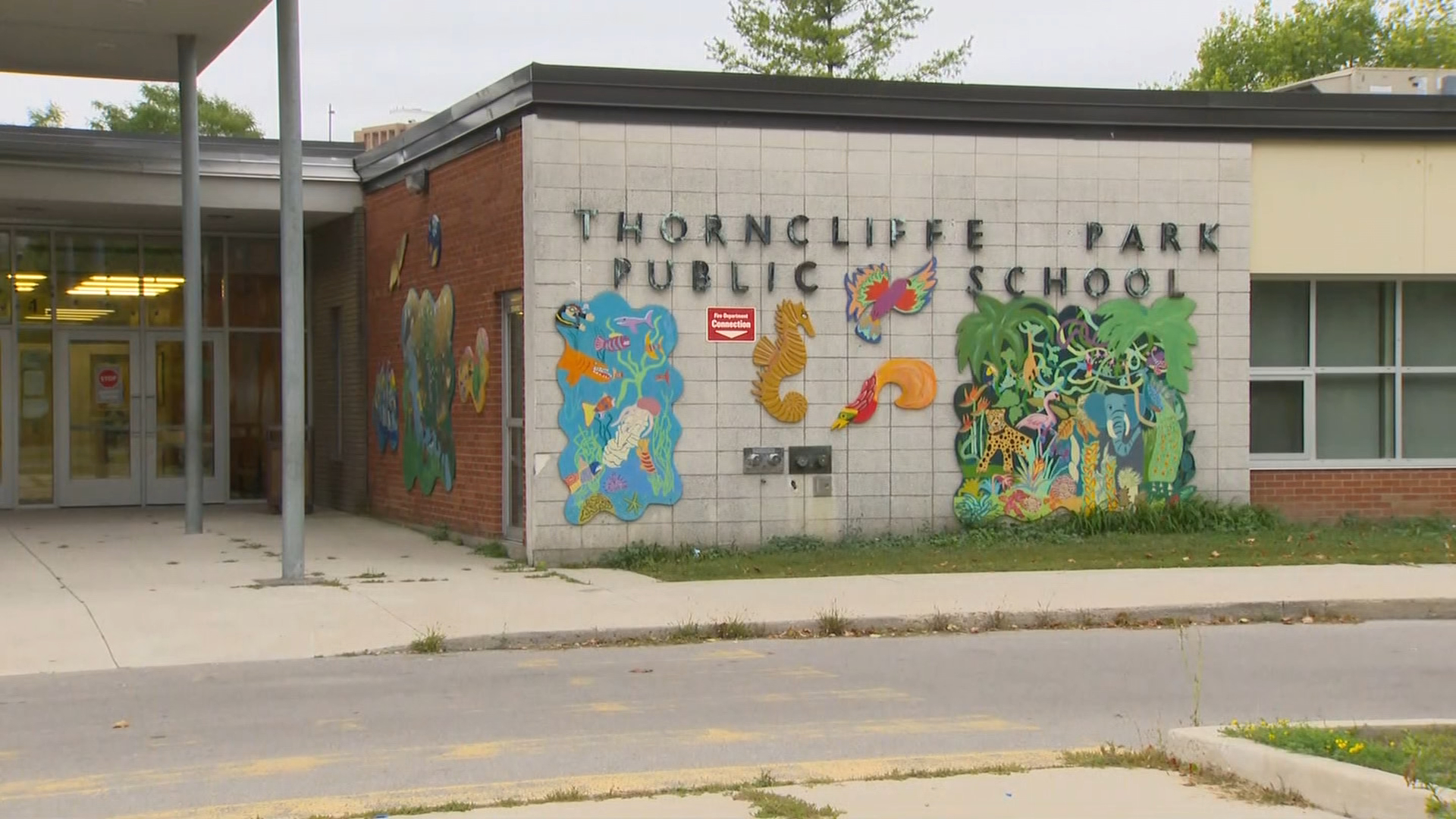
Testing of asymptomatic students and staff at Thorncliffe Park Public School has led to the discovery of 19 positive cases of COVID-19 at the school.
In a letter to parents on Sunday, Principal Jeff Crane said 433 tests were conducted at the school on a voluntary basis under a Ministry of Education pilot program to test students and staff without symptoms for COVID-19.
Tests were conducted on Thursday and Friday last week and initially found 20 cases, but one has since been revealed as a false positive. A total of 18 students and 1 staff member have tested positive over two days of testing.
The Toronto District School Board tells 680 NEWS that 14 classes have been asked to self-isolate.
Crane said the school will conduct a deep cleaning of the building before school starts Monday morning. Along with other safety protocols including masks and physical distancing, Toronto Public Health has also asked siblings to stay home if one child in the household has symptoms.
“Since COVID-19 continues to spread in the community, finding additional cases in schools from broad testing is not
unexpected at this time,” said Crane.
He added that Toronto Public Health does not believe the school needs to close at this time because compared to the rest of the Thorncliffe Park community, the rate of positivity within the school is significantly lower.
The school now has a total of 21 cases of COVID-19.
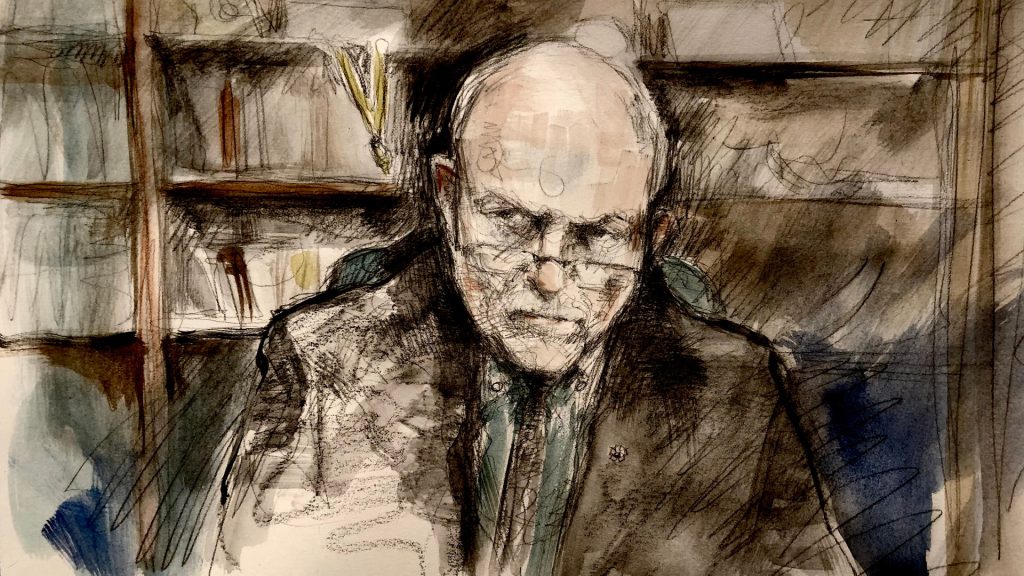
A renowned forensic psychiatrist will continue his testimony Friday at the murder trial for the man who killed 10 people when he drove a van down a crowded Toronto sidewalk.
CityNews reporter Adrian Ghobrial is covering the trial, follow his tweets below:
Alek Minassian has pleaded not guilty to 10 counts of first-degree murder and 16 counts of attempted murder.
The defence argues the 28-year-old from Richmond Hill, Ont., should be found not criminally responsible (NCR) for his actions on April 23, 2018 due to autism spectrum disorder (ASD).
Dr. John Bradford said Thursday that Minassian doesn’t show signs of being psychotic and does not meet the “traditional” test to be found not criminally responsible (NCR) for his actions.
However, he said Minassian’s ASD likely led to ritualistic and obsessive behaviour and contributed to his problems with feeling empathy.
“The traditional condition that leads to an NCR finding on the basis of a mental disorder is some psychotic condition, most usually schizophrenia,” he said.
When asked why someone with high-functioning ASD would be considered for a not criminally responsible defence, Dr. Bradford gave two main potential reasons.
Firstly, he cited something called the theory of mind deficit, which affects a person’s ability to perceive the emotional states of others, and their own emotional states. This can lead to a lack of empathy and defects in moral reasoning, he testified.
Secondly, he added, people with ASD can become hyper-focused, exhibiting abnormally narrow interests, becoming fixated on certain issues that can affect their behaviour.
Dr. Bradford admitted he wasn’t an autism expert, but earlier told the court that through his research he’s learned that people living with ASD are rarely violent, saying they are “more likely to be victims than perpetrators (of violence).”
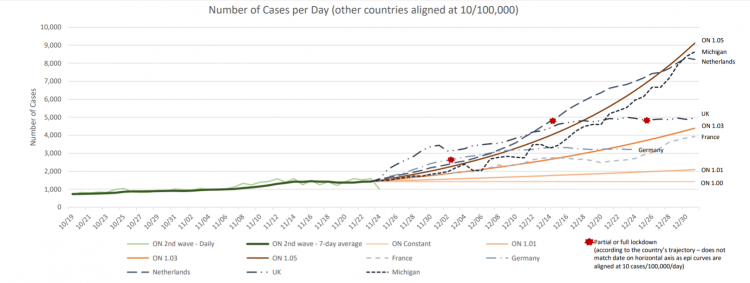
New modelling shows the province could see 9,000 daily new cases of COVID-19 with the number of patients in intensive care expected to hit 200 by the end of next month.
New provincial data show COVID-19 hospitalizations in Ontario went up more than 63 per cent over the last four weeks and that deaths in long-term care homes are rising, even though the number of cases among staff and residents appears to be flattening.
This is the first time new projections have been released since the province sent Toronto and Peel Region into lockdown earlier this week.
The report shows 70 per cent of new cases in Toronto, and 27 per cent of cases in Peel and Ottawa, cannot be linked to a source.
The modelling provides several scenarios for cases towards the end of the year.
If we stay stagnant, daily cases will remain around 1,500 by the end of the year. If the province sees one per cent growth, there will be just over 2,000 cases a day.
At three per cent growth, we will see 4,500 daily COVID-19 cases while at five per cent, the province will hit 9,000 cases by the end of December.

The previous modelling, released two weeks ago, showed Ontario could see as many as 6,500 new daily cases of COVID-19 by mid-December unless steps were taken to limit the spread of the virus.
It said the province would reach 2,500 new daily cases by that time if the growth rate was at three per cent, or 6,500 if the growth rate was at five per cent.
At the time, Dr. Adalsteinn Brown, one of the experts behind the projections, said a five per cent growth rate was “slightly optimistic.”
Health officials have also pointed out that some communities are being hit harder by the pandemic because of “long-standing structural factors that lead to a higher exposure to COVID-19.”
The modelling says a one-size-fits-all approach will not have the same impact on some communities, especially ones with a higher household density, higher proportion of essential workers and neighbourhoods with the lowest percentage of suitable housing.
The latest data were released shortly after the province announced it is starting voluntary COVID-19 testing for asymptomatic students, faculty and staff in regions with high rates of transmission.
The expanded testing will be provided for four weeks in schools in Toronto, Peel and York regions, and Ottawa. Those who show symptoms or have been exposed to a COVID-19 case should continue to stay home and get tested at an assessment centre, the province said.
The province first announced the program this summer but it had not yet taken effect.
Files from The Canadian Press were used in this report

The owner of Adamson BBQ is facing several charges after crowds formed once again outside the restaurant fined with defying lockdown orders the previous two days. Supporters are now protesting outside Premier Doug Ford’s home.
The City of Toronto had changed the locks on the doors on the restaurant and it remained closed today, but that didn’t stop supporters of owner Adam Skelly from showing up.
Police say they allowed Skelly to enter a portion of the building where there is no access to the restaurant to obtain personal belongings. They allege he and other broke through the drywall in order to enter the restaurant and damaged the locks that had been changed earlier in the day.
Toronto police say Skelly, who is 33 years old, was arrested for attempting to obstruct police and trespassing after he allegedly attempted to gain access into the restaurant from the front entranceway.
A second man was also arrested for assaulting a police officer. In video taken of the arrest, it appears at least one other man was put in handcuffs as a scuffle ensued.
The 27-year-old from Markham is facing several charges including six counts of assaulting a police officer, five of which allege he spat at an officer, attempt to obstruct police and uttering threats.
Both will be held overnight for a bail hearing.
Supporters that were outside the restaurant then headed to Premier Ford’s house in Etobicoke where they continue to protest.
A statement from the Premier’s office called said the gathering “goes beyond acceptable political protest.”
“Neither his family nor his neighbours should be subjected to this kind of harassment and intimidation. These protests have been ongoing for several weeks,” read the statement. “We are pleading with them to leave those who have nothing to do with our government’s policies alone.”
The City of Toronto has now taken occupancy of the entire property and will be putting in additional measures to ensure the same thing won’t happen again on Friday.
Some of the measures include boarding up the restaurant, changing the locks on the backdoor and fixing the locks that were damaged earlier Thursday.
Police will also remain on the property overnight.
WATCH: Reporter Tina Yazdani was live at Adamson BBQ as crowds form for the third straight day at the restaurant defying lockdown orders
Prior to Skelly’s arrest, people began pounding on the doors of the restaurant that had been surround by police, chanting “open” and “we’re hungry.”
Police had blocked the road leading to the restaurant, blocking a delivery truck with food. Some people were seen helping carrying supplies over to the building.
“I’ve spoken to the police chief this morning … and they have a plan. He’s informed me the locks have been changed on the building … and there’s going to be a police presence there also … it is going to be closed today, you can be sure of that,” said Tory.
Police and city staff had arrived at the establishment around 6 a.m. with locksmiths in tow to change the locks.
A short time after the locks were changed, a post on the restaurant’s Instagram page said: “Need locksmith & other hands at Etobicoke ASAP.”
On Wednesday, Toronto police Supt. Domenic Sinopoli said that if Skelly chose to open again, action would be taken.
“We are in a position to stop him if he opens tomorrow, the next day and so forth. The strategy will change from day-to-day depending on what we’re faced with,” Sinopoli said.
Skelly is facing a total of nine charges over the last two days.
Municipal Licensing and Standards and Toronto Public Health both laid new charges Wednesday, as did the province under the Reopening Ontario Act.
Skelly is scheduled to appear in court on March 19, 2021. Police say nobody in the large crowd that congregated at the restaurant was charged.
The restaurant did close later Wednesday afternoon, but it’s not yet clear if it did so out of compliance with orders, or simply because for the second straight day it ran out of food.
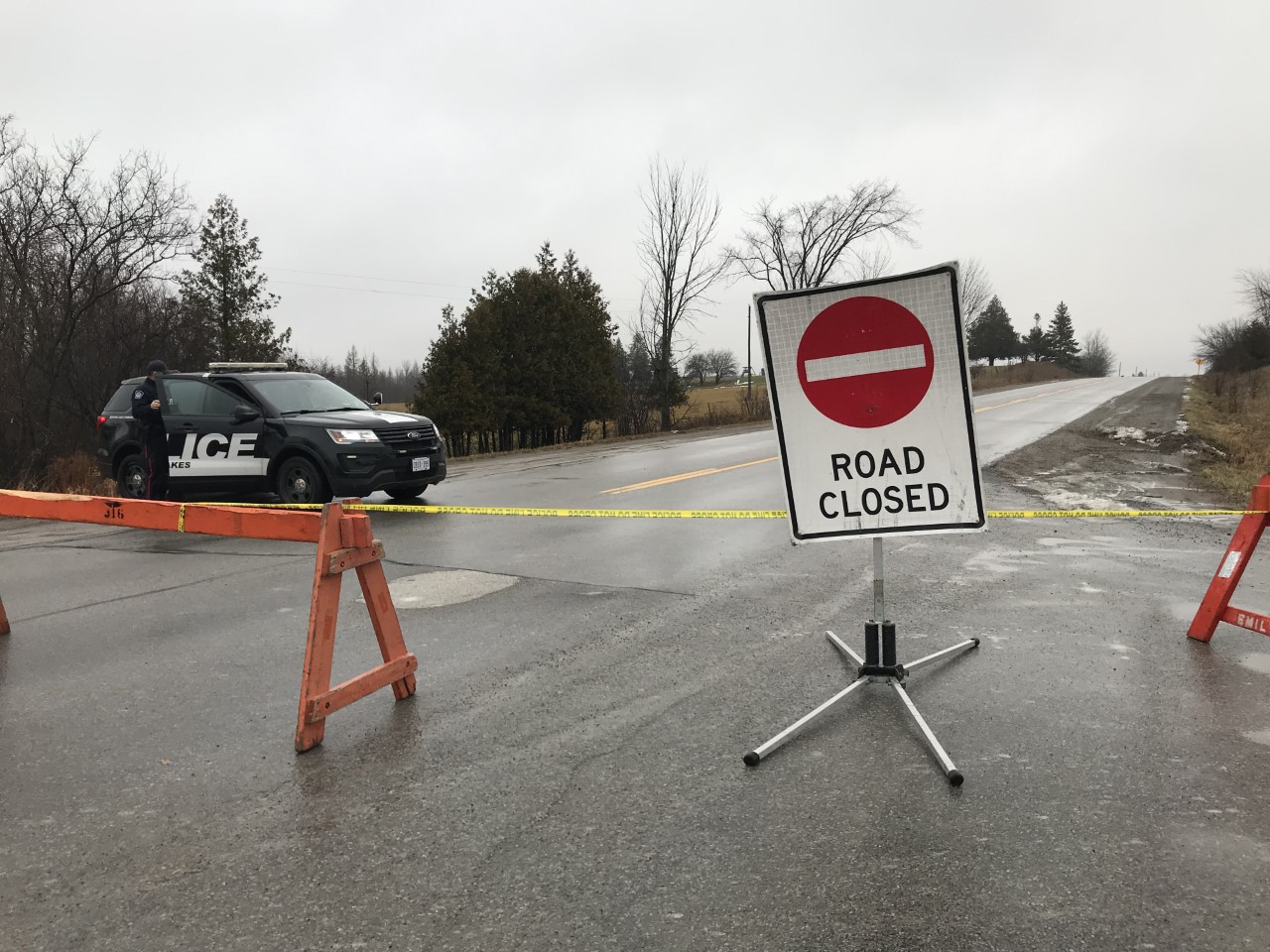
A one-year-old boy is dead, a civilian and an Ontario Provincial Police (OPP) officer injured in an incident near Lindsay that is now being investigated by province’s police watchdog.
According to the Special Investigations Unit, it all started around 8:48 a.m. when police responded to a call in Trent Lakes about a an alleged abduction of a boy by his father.
The OPP then located a vehicle of interest in the City of Kawartha Lakes and attempted to stop the pickup truck. The truck then became involved in a collision with a police cruiser and another vehicle on Pigeon Lake Road.
An officer who was standing outside the cruiser at the time of the crash sustained serious injuries. His condition was upgraded to stable later in the day.
“An interaction ensued between the 33-year-old driver and officers, and three officers discharged their firearms,” said SIU spokesperson Monica Hudon. “The man was struck and airlifted to the hospital in grave condition.”
The one-year-old boy who was inside the pickup truck was fatally wounded by gunshot and pronounced dead at the scene.
It’s uncertain who may have fired the fatal bullet.
In a separate release, provincial police confirmed most of the SIU details except they say they were called to a residence for a report of “a domestic dispute involving a firearm.”
While the SIU will investigate the officers’ involvement in the shooting, OPP Commissioner Thomas Carrique said the York Regional Police have been called in to handle other aspects of the investigation.
Kawartha Lakes Mayor Andy Letham said he’s not able to comment on an ongoing investigation, but that the shooting has shaken his central Ontario municipality.
“The community is in disbelief that this is happening,” he wrote in an email.
He added that they appreciate what provincial police officers do to keep Kawartha Lakes safe.
This is the second OPP officer to be involved in a serious incident in the past week.
Last Thursday, 28-year veteran officer Marc Hovingh was killed in a shooting on Mantioulin Island that also resulted in the death of a civilian.
Files from The Canadian Press were used in this report

Toronto police and bylaws officers were back at Adamson Barbecue Wednesday but it wasn’t for the ribs.
For the second straight day the Etobicoke restaurant drew the attention of the authorities — and a motley crew of supporters — for defying the province’s lockdown orders that forbid indoor dining.
Owner Adam Skelly is now facing a total of nine charges over the last two days.
Municipal Licencing and Standards and Toronto Public Health both laid new charges Wednesday, as did the province under the Reopening Ontario Act.
Skelly is scheduled to appear in court on March 19, 2021. Police say nobody in the large crowd that congregated at the restaurant was charged.
No more Mr. Nice Guy for Ford
Premier Doug Ford was criticized on Tuesday for what some considered a lenient stance on Skelly’s defiance.
“I can’t get angry at any businessperson, they’re hurting right now,” he said.
But a day later he changed his tone.
“People are dying because of COVID-19 and he just wants to say forget it and have everyone down there? It is absolutely irresponsible and ridiculous,” Ford fumed.
“I was nice to the guy yesterday,” he added. “But buddy, let me tell you something, you need to shut down. You’re putting people’s lives in jeopardy.”
Police vow action
Skelly’s Etobicoke BBQ joint did close later Wednesday afternoon, but it’s not yet clear if it did so out of compliance with orders, or simply because for the second straight day it ran out of food. Either way, Toronto police Supt. Domenic Sinopoli said the closure made their jobs easier.
“Police did contemplate dispersing the large crowd but they came to an understanding with the owner that he would close down the business.”
“At the end of the day this a public health crisis,” he added. “The fact that there were so many people congregated in one location, particularly without any facial coverings, is of concern to us.”
Skelly hasn’t confirmed reports that he plans to open again on Thursday, but Sinopoli said if he did, action would be taken.
“We are in a position to stop him if he opens tomorrow, the next day and so forth. The strategy will change from day-to-day depending on what we’re faced with.”
When earlier asked who would have the authority to shutter the restaurant for its flagrant flouting of lockdown rules, Toronto councillor Mark Grimes, who represents Etobicoke-Lakeshore, seemed unsure.
“Probably the Toronto police I would say, but again, that’s a legal issue we are looking at now … this may go to the Supreme Court,” he said.
The slow-cooked drama began on Monday night when Skelly posted a message on his business’ Instagram page saying he would open for full-service Tuesday.
He followed through on that vow, drawing dozens of maskless patrons who dined on his fare inside the restaurant at 7 Queen Elizabeth Blvd.
Adrian Ghobrial reported live from the chaotic scene on Wednesday afternoon. Watch as he’s confronted by store owner Adam Skelly below:
Police and city bylaw officers attended the scene Tuesday, but allowed the restaurant to remain open, with police saying dispersing the large crowds would have posed a public safety risk.
Later Tuesday, the restaurant was ordered to close by Toronto’s medical officer of health. “Investigations require the gathering of all the facts before enforcement action can be taken,” the City said in a release. “The City has now taken enforcement action, and the restaurant is closed.”
But Skelly took to Instagram again on Tuesday night, saying he would open on Wednesday from 11 a.m. until his food sells out.
About half a dozen officers headed back at the location Wednesday morning. Upon entering the premises, a flood of Skelly’s supporters began chanting “Freedom! Freedom!”
A few hours later, several city bylaw officers arrived.
The restaurant has become somewhat of a mecca for anti-maskers, conspiracy theorists and COVID-19 deniers.
Indoor dining was banned in Toronto and Peel on Monday as part of provincial lockdown orders for the two COVID-19 hotspots.
Restaurants are still allowed to offer take-out and delivery
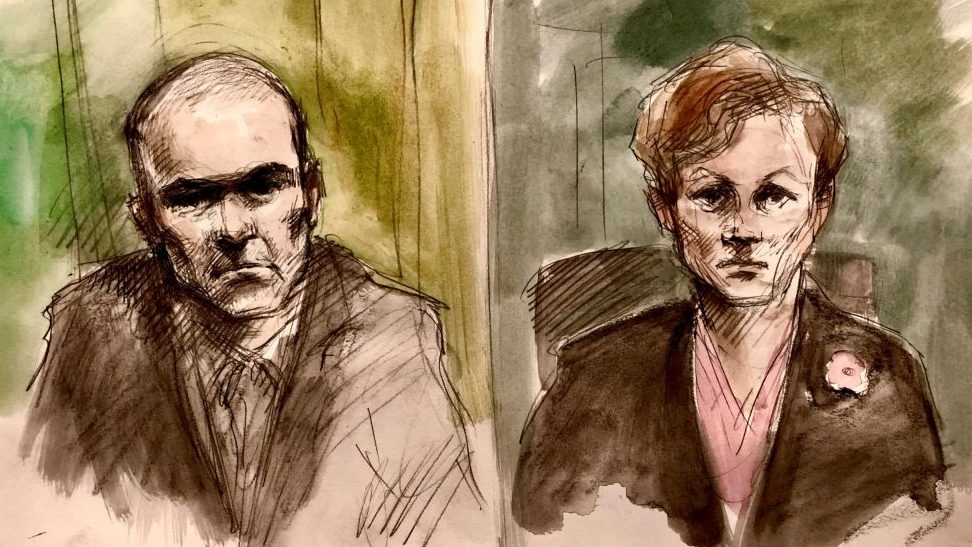
A psychiatrist is expected to testify for the defence Thursday in the murder trial for the man who drove a van down a crowded Toronto sidewalk killing 10 people.
CityNews reporter Adrian Ghobrial is covering the trial, follow his tweets below:
Alek Minassian has pleaded not guilty to 10 counts of first-degree murder and 16 counts of attempted murder.
The defence argues the 28-year-old from Richmond Hill, Ont., should be found not criminally responsible for his actions on April 23, 2018, due to autism spectrum disorder.
On Monday, the judge gave the Crown and its experts a few days to review a number of interviews a psychiatrist hired by the defence did with Minassian.
Another psychiatrist has testified that Minassian’s autism spectrum disorder left him fixated on mass killings and vulnerable to the ramblings of an American mass murderer.
Court has heard that Minassian told various doctors his motivation for the attacks ranged from notoriety to revenge against society for years of rejection by women to anxiety over starting a new job.
